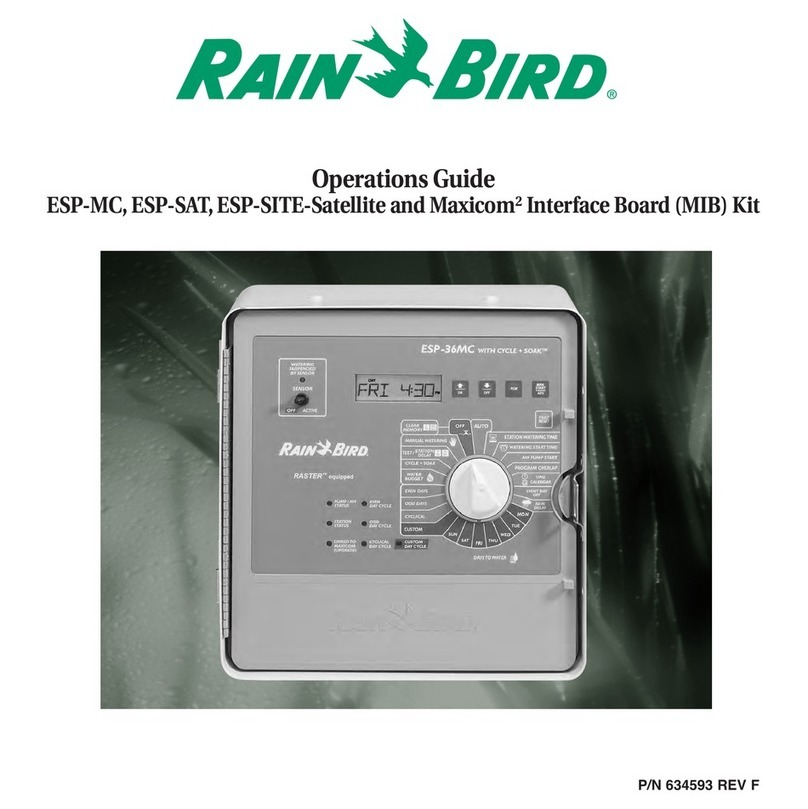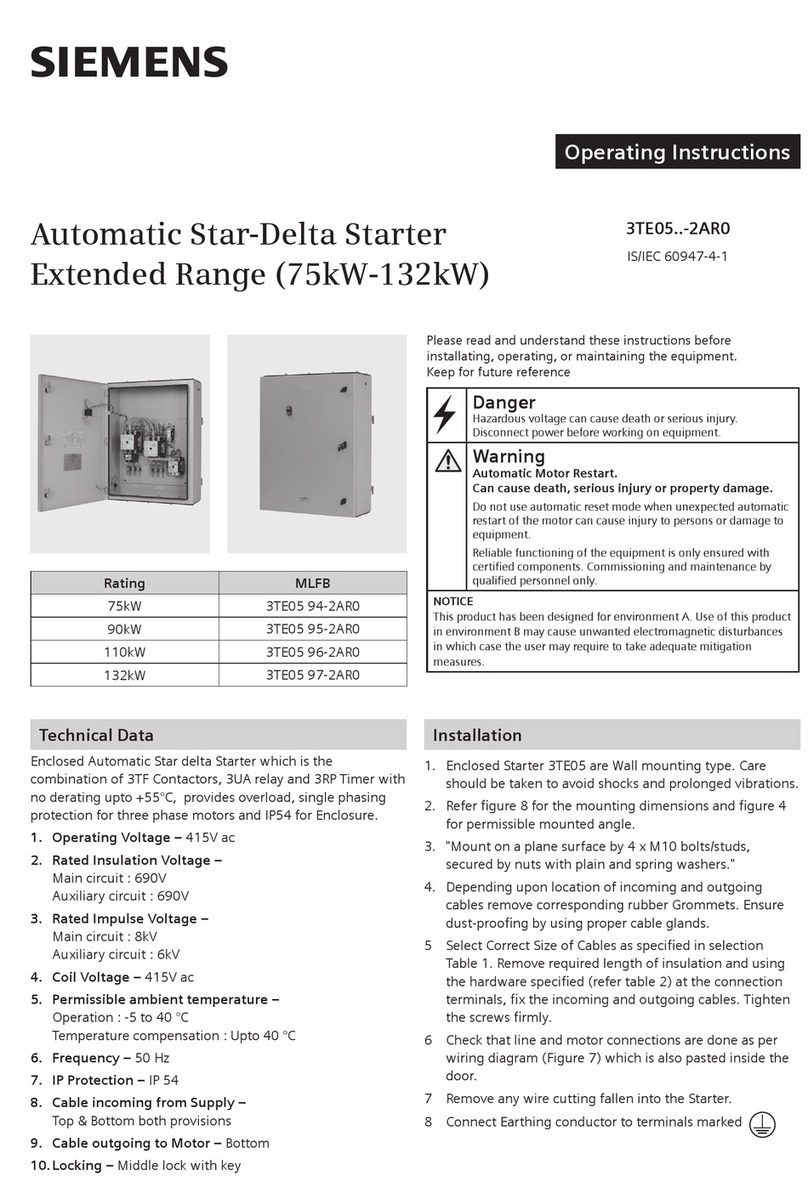MAC BRAIN1 User manual

Brain_1_08 190722
CONTROL BOARD
BRAIN1
GBR
CAREFULLY READ THE MANUAL BEFORE USE
Customer:
Installing Company:
INFORMATION:
Timbre&Signature

2www.mac-srl.it
Brain_1_08 190722
CONTROL BOARD ___________________________________________________________ 3
CONNECTION OF CONTROL BOARD ___________________________________________ 4
2.0 TECHNICAL NOTES _______________________________________________________ 6
3.0 PROGRAMMING - FUNCTIONING __________________________________________ 7
4.0 SAFETY WARNINGS FOR MAINTENANCE AND USE __________________________ 10
WARRANTY _________________________________________________________________ 11
GUIDE FOR THE CAUSES RESEARCH OF SOME DRAWBACKS____________________ 11
GBR

230 Vac 50Hz
NF
Buzzer
230Vac
LTL
WARNING
Read carefully the control board manual for
the cables section and length.
ANTENNA Entrance
SDL
M1
Com
V
R
Com
Com
A
C
Stop (blocco)
SIC1
Electrical valve 230V
FC A M1
FC C
WARNING= The limit switches of the head
must be connected in series on SIC1
Ci riserviamo la proprietà di questo disegno con divieto di dionderlo o riprodurlo senza nostra autorizzazione
TRIMMER SEMPRE A POTENZA MASSIMA
TRIMMER SEMPRE A POTENZA MASSIMA
LAMPEGGIATORE
V
GBR
CONTROL BOARD
ANTENNA LED EXT
COMMANDS
INPUT
ACCESSORIES
TRAFFIC LIGHT
+ELECTRICAL VALVE
POWER SUPPLY
ENGINE
Before the installation, please read carefully this manual .
The company declines any responsibility in case of non compliance with the laws in the country where the
installation is done.

4www.mac-srl.it
Brain_1_08 190722
-
+
GBR
INPUTS TERMINAL CONTACT
External antenna protection 1
External antenna signal 2
CH CLOSE button+ CLOCK function 7 NA
AP OPEN button 6 NA
CCOMMON 5
F2(4) SECURITY DEVICE: SIC1+2
(sensitive head + photocells + coil) 4 NC
ST STOP EMERGENCY 3 NC
Fn LIMIT SWITCH BOLLARD 1
FA1 Limit switch OPEN M1 (Fn OPEN) 10 NC
FC1 Limit switch CLOSE M1 (Fn CLOSED) 9 NC
CCommon 8
CONNECTION OF CONTROL BOARD
OUTPUTS TERMINAL NOTES
POWER SUPPLY OF AUXILIARY ACCESSORIES 13 24Vac MAX280mA
14
LED BRIGHT HEADS BOLLARDS
(is recommended to install a diode)
13 24Vac
15
TRAFFIC LIGHT WITH TWO LIGHTS (red/green) MAX
300W
16 GREEN LIGHT
17 RED LIGHT
18 COMMON (neutral)
ELECTRIC VALVE 17 230Vac 160W
ENGINE1*
OPENING PHASE 22
230Vac MAX500WCOMMON 23
CLOSING PHASE 24
*500W MAX FOR ENGINE -> MAX DURATION 10 SECONDS
POWER SUPPLY INPUT OF CONTROL BOARD TERMINAL NOTES
CABLE ENTRY COMING FROM LINE DISCONNECTOR
230Vac 50 Hz
19 PHASE
20 NEUTRAL
BOARD MASS (for GROUND connection) 21

WARNING:
The grounding cable must be necessarily connected with the predisposed control board terminal: terminal
number 21.
EVERY BOLLARD HAS LABELLED CABLES FOR THE ELECTRICAL CONNECTION WITH THE
CONTROL BOARD.
The current laws obligate this connection to avoid inopportune starting or missing stops in case of
breakdowns (both on input side and output side).
NOTES mA (interruption) FUSES
FUSES FOR ENGINE + TRAFFIC LIGHT (Engine absorbs 2500mA)
Trac light MAX 500W(Relay maximum amperage of working 5A) 6300 F2
FUSES FOR INPUTS + ACCESSORIES + LED
(Led absorbs 30mA, input boards 70mA) 315 F1
NOTES ACRONYM LED
The LED diagnosis state has been realized at the rst ignition of 1 column of the bollard totally lowered.
It lights when there is electrical network ON ON
LED for control board programming
It ashes for few seconds
It is turned o during the functioning
OK OFF
It lights up when the button is pushed F1 (6) OFF
It ashes when the button/clock is pushed F1A (7) OFF
It turns o when the stop button is pushed (stop button with self-
holding) STOP (3) ON
It turns o with coil detection / sensitive head F2 (4) ON
It turns o when the bollard is UP FC (9) ON
It turns o when the bollard is DOWN FA (10) OFF
NOT USED SS
NOT USED SS2
DIP SWITCH SIGLA DEFAULT
3.l) CLOCK FUNCTIONING (page 7) Dip 1 OFF
3.m) PISTONS MAINTENANCE (page 7) Dip 2 OFF
3.n) EXCLUSION LIMIT SWITCH TIME (page 8) Dip 4 OFF
Dip 3-5-6-7-8-9-10 Dip 3-5-6-7-8-9-10 OFF

6www.mac-srl.it
Brain_1_08 190722GBR
2.0 TECHNICAL NOTES
2.a) INPUTS AP(6) / CH(7)
The contacts to insert in these two inputs are free of tension (N.A.), AP input makes the bollard goes down, CH
input raises the bollard.
INPUT AP(6)
It is possible to connect in parallel to this entry the following devices:
- N.A. Button
- Emergency vehicles sound recognizer (sirens, police, ambulance, etc.)
- Access control: telepass, reading plate, magnetic coil, ecc.
INPUT CH(7)
It is possible to connect in parallel to this input the following devices::
- N.A. Button
- Clock contact (optional hardware) (activate the programming)
2.b) SIC1+2 SAFETY INPUT F2(4)
It has been projected for the input of any safety device (even if they are connected in series).
This input allows the reversal of running direction (only if the bollard is closing the passage).
Devices connectable to this input:
-Magnetic detector with single/double coil.
-Active modulated infrared photocells.
-Pre-calibrated pressure switch
-Positive opening limit switch installed under the sensitive head.
-Any devices that respect the current laws
2.c) OUTPUTS
Specic circuit for the ignition of an engine to improve the performances of the bollard (prevention against
malfunctions, route defusing, ex. glued contacts).
2.d) TRAFFIC LIGHTS (16-17-18)
It has been projected to ensure a safe passage of the vehicle in the passage protected by the bollard. The green
light will appear when the passage will be free from any obstacle.
2.e) ELECTRICAL VALVE (17-18)
It has been projected to guarantee the passage even in case of power failure.
The electrical valve will make the bollard go down up to the ground level.
2.f) OUTPUT 24V (13-14)
It is used for the power supply of the auxiliary devices (ex. Photocells).
2.g) LED LIGHTS SENSITIVE HEAD 24F (13-15)
It has been projected to supply 1 ashing bright head.
2.h) INSTALLATION
- The control board must be installed in a protected and dry place with its own protection box.
- Install a circuit breaker of type 0,03A, high sensitivity to the supply of the control board.
- Make sure the supply of the control board is 230Vac ±10% 50Hz.
- For the control board, electrical motor, ashing light, trac lights, electrical valve; use cables with wire not less
than 1,5mm ² up to 50m of distance; for limit switches and accessories of command and safety use cables with
wires of 1mm ². For distances of more than 50 meters use the appropriate wires with the suitable section for the
installation. Note: for applications such as lights, cameras etc. use static relays.
- The installation should be made by competent sta and in compliance with the legislation in force
- Before starting the installation, verify the integrity of the control board.
- The installation, the electrical connections and the regulations must be done to the letter.
- Packaging Materials (cardboard, plastic, polystyrene, etc.) should not be dispersed into the environment.
- Do not install the control board in environment exposed to danger or disturbed by electro-magnetic elds. The
presence of gas or ammable smokes is a great danger for safety.
- Provide on the supply network a protection for extra tensions, a switch/ disconnecting switch and/or dierential
t for the product and with the current law.
- The constructor declines every responsibility if other devices and/or components incompatible with the product
for integrity are installed, safety and functioning of the product.
- For reparation or substitution, only original spare parts must be used.
- The installer must give all the information related to the functioning, maintenance and use of the single parts
and of the system in its entireness following the Directive Machine (see laws EN 12635, EN 12453 and EN
12445).

3.0 PROGRAMMING - FUNCTIONING
3.a) RESET OF THE CONTROL BOARD
This function allows to go back to the basic programming;
Working time 8 seconds;
Trac lights waiting time 10 seconds;
Limit switch delayed of 200 ms;
Automatic reclosing excluded;
Basic radio code: button 1 of a TX type 53200 with DIP 1,3,5,7,9 ON and DIP 2,4,6,8,10 OFF
RESET PROCEDURE:
1) Push 1 time the PROG button (the OK and EXT LEDs are xed on)
2) Push and keep pushing simultaneously the AP (6) and CH (7) buttons
3) After about 3 seconds the LED OK starts to ash quickly
4) Release the AP(6) and CH(7) buttons
5) When the OK LED ends to ash and turns itself o, the reset is nished..
3.b) RADIO CODES PROGRAMMING:
PROCEDURE:
1) Push 1 time the PROG button (the OK and EXT LEDs are xed on).
2) Send the radio code to be memorized by keeping a distance of at least 50 cm from the control board.
3) If the code has been memorized, the LED OK ashes.
4) If there are other codes to be memorized, repeat from point 3
5) Push 2 times the PROG button (the OK led turns itself o) to exit from the radio codes programming.
3.c) COMBINATION RADIO FUNCTION
If no input is active during the sending of the code to be memorized (point 3b), the command is matched with the
“Start-Stop” function (STEP BY STEP).
To match the radio command with the OPEN function, activate the input AP (6) while sending the code.
To match the radio command with the CLOSE function, activate the input CH (7) while sending the code.
To match the radio command with STOP function, activate the input STOP (3) (open the contact) while sending
the code.
3.d) CANCELLATION SINGLE RADIO CODE:
PROCEDURE:
1) Push twice the PROG button (The LED OK is xed ON while the LEDs EXT ash).
2) Send the radio code to be cancelled.
3) If the led OK ashes 3 times, the code has been cancelled. Instead, if it ashes 1 time slowly, it means that
the radio code isn’t present in memory.
4) If there are other codes to be cancelled, repeat from point 3
5) Push 2 times the PROG button to exit from the radio codes cancellation (the OK led and the external leds
turn their selves o)
3.e) CANCELLATION OF A GROUP OF CODES:
It allows to delete all the same type codes with a single operation.
PROCEDURE:
1) Push 2 times the PROG button (the led OK is on, whereas the leds EXT ash)
2) Select the group to be cancelled:
- button AP(6) >> canc. All the codes OPEN
- button CH (7) >> canc. All the codes CLOSE
- button STOP(3) >> canc. All the codes STOP
- Opening F2(4) >> canc. All the codes (STEP BY STEP)
3) The OK led quickly ashes during the cancellation
4) When the led OK turns o, the procedure is nished
3.f) PROGRAMMATION TIME OF AUTOMATIC RECLOSING:
PROCEDURE:
1) Push and keep pushed the PROG button (the led OK and the leds EXT are on, xed)
2) After about 3 seconds, the led OK starts to ash
3) Release the PROG button, the led OK keeps ashing
4) Push and keep pushed the CH(7) button for the time you wish to memorize
5) When the CH(7) button is released, the led OK turns o and the procedure is nished
During the normal functioning the automatic reclosing can be excluded by sending the Start/Stop command
during the pause or by activating the emergency stop.

8www.mac-srl.it
Brain_1_08 190722GBR
3.g) CANCELLATION OF THE AUTOMATIC RECLOSING
PROCEDURE:
1) Push and keep pushing the PROG button (the led OK and the leds EXT are on, xed).
2) After about 3 seconds, the led OK starts to ash
3) Release the PROG button, the led OK keeps on tashing.
4) Open the contact to the STOP(3) input (if there is, push STOP button)
5) The led OK ashes to indicate that the cancellation is happening
6) When the OK led turns o, the procedure is nished
3.h) PROGRAMMING OF THE TRAFFIC LIGHTS WAITING TIME:
PROCEDURE:
The waiting time of trac light is the available time for a vehicle to cross and free the passage since when the
trac light is red until the bollard starts its climb.
Meanwhile, the leds incorporated in the head keep ashing (see image “A” at page 8, point 5.)
In order to dene the waiting time, it is necessary to time how much a vehicles takes for crossing and freeing
the passage. (see image “A” at page 8)
PROCEDURE:
1) Push and keep pushed the PROG button (the led OK and the leds EXT are on, xed)
2) After about 3 seconds the led OK starts ashing.
3) Release the PROG button, the led OK keeps on ashing.
4) Push and keep pushed the AP button for the time you wish to memorize.
5) When the AP button is released, the OK led turns o and the procedure’s nished
image A

3.i) PISTONS WORKING TIME PROGRAMMING:
PROCEDURE:
1) Push and keep pushed the PROG button (the led OK and the led EXT are on, xed)
2) After about 3 seconds, the led OK starts ashing
3) Release the PROG button, the led OK keeps on ashing
4) Open the contact F2(4) for the time you wish to memorize
5) When the contact F2(4) is closed, the led OK turns o and the procedure is nished
3.l) CLOCK PROGRAMMING:
To program the clock, the DIP1 must in ON.
Note: connect the clock contact without tension in place of the CH input (terminals 5-7).
Thanks to this function, the road will be open until the contact of the clock is closed and it will close when the
clock contact is open.
In case of power failure, at the revival of power the central guarantees the reopening or the reclosing even if the
clock has commuted while the central was o.
When the clock contact is closed, the pause management is excluded. If during the automatic reclosing of the
clock, the security F2(4) intervenes, the bollard reopens and it will try to reclose after 5minutes The closing
attempts will continue until the bollard isn’t closed or coming a user’s command.
3.m) ACTIVATION OF HYDRAULIC PRESSURE RETENTION:
To activate this function, DIP 2 must be in “ON”.
When the system is in CLOSE state, the control board check the position of closing limit switches.
If the limit switches have inverted their state, due to pistons lowering, the control board commands the closing of
the bollard. The control is done every 10 minutes and the forced closing lasts up to the reaching of the limit switches
or to a maximum of 3 seconds. Before the forced closing the bollard makes some signalling ashes. The ashing
light doesn’t work during the forced closing. During the forced closing the safeties F2(4) don’t order the inversion but
only the stop.
3.n) EXCLUSION OF THE DELAY TIME OF THE LIMIT SWITCHES:
Usually, the engines stop after 250ms from the opening of the contact of the limit switches. Thanks to this
procedure it is possible to exclude the delay letting stop the engines as soon as the limit switch contact is open.
It turns on placing the DIP4 in ON.

10 www.mac-srl.it
Brain_1_08 190722GBR
RADIO CONTROL REMOTE PROGRAMMING OPERATIONS PICTURES
This procedure allows to guarantee a new
radio code without directly operating on the
board.
The programming operations occur all
by radio using a remote control already
programmed on the control board.
If there are more codes to be memorized,
it is necessary to repeat every time this
procedure from the beginning.
This function is available only if in the control
board are only memorized Rolling-Code
codes.
The function of the new radio code can be
selected during the programming following
the same criterion for the standard
memorisation.
1) Send a command to the control board
with a remote control IRIS RC type
already added in memory.
2) Within 8 seconds, push simultaneously
1 and 3 buttons of the IRIS RC remote
control used in the previous point.
The control board is entered into
programming.
3) Within 8 seconds, send the new radio
code of the remote control to be
memorised (Rolling-Code type).
If no code is sent, the control board exits
from the programming after 8 seconds
automatically.
4) Check that the new code memorised
perfectly works, otherwise repeat the
procedure.
3.o) RADIO / REMOTE CONTROL PROGRAMMING:
4.0 SAFETY WARNINGS FOR MAINTENANCE AND USE
WARNINGS
These warnings are integral and essential parts of the electronics and they are to be given to the nal user. So it
is necessary to keep this manual. Read carefully the instruction book which gives important indications about the
installation. The wrong installation or the improper use of the control board may be a source of serious danger.
MAINTENANCE
To guarantee the eciency of the control board professional sta must make the maintenance in times decided by
the installer, by the producer and by the legislation in force. The operations of installation, maintenance, reparation
and cleaning must be documented. This documentation is to be kept by the user.
FOR THE USER
Read carefully the instructions and the documents enclosed. The product must be used according to the use designed
by the constructor. Any other use is to be considered improper and dangerous. Moreover, the information in this
document and in the enclosed documents may be modied without notice. MAC s.r.l. declines all responsibility. In
case of maintenance, cleaning, breakdown or malfunction of the product, turn o the power supply and avoid any
attempt of intervention except when indicated. Call MAC s.r.l. sta before any maintenance or sending of damaged/
broken material.

WARRANTY
The warranty is twenty-four (24) months starting from the selling date of the control board. It decays in case of:
negligence, mistake or wrong use of the product, use of non-compliance accessories to the specics of the builder,
tampering operated by the customer or by a third party, natural causes (lightnings, oods, re, etc.), vandalism acts,
changes in the environmental conditions in the installation place. The warranty does not include, moreover, the parts
subject to wear. (batteries, oil, etc.). The purchase of the product implies the complete acceptance of the general
sale conditions.
Guide for the causes research of some drawbacks
N DRAWBACKS PROBABLE CAUSES HYPOTHESIS OF FAULT SOLUTIONS
1 BOLLARD NO RAISES
(wrong connections)
-wrong sense of rotation
-reversed limit switches
-lack of power supply
-control board damaged
-fuses damaged
-wrong connection of electrical
engine
-wrong limit switch connection
-sectional swtich open
-control board damaged
-high absorption peak
-short circuit on the engine,
electrical valve, inputs,
output24Vac, trac light
-rewire the electrical engine on the
control board
(reverse rise/fall wires)
-rewire magnetic limit switches
(reverse limit switch close with open-rise)
-reactivate sectional switch
-replace the control board
-replace the fuse with others appropriate
-check and x the breakdown
2BOLLARD NO RAISES
COMPLETELY
(during the raise, the
bollard stops)
-bollard stops at the mid of
the stroke
- magnetic limit switches are
closed (lights FC1 e FA1
switch on about MOT1)
-wrong programmation of
working time
-magnetic limit switch out
reading zone of magnet
-program again the working time
-establish the right position for limit
switches reading between the magnet
and the sensor(bringing near the
magnetc limit switch)

12 www.mac-srl.it
Brain_1_08 190722
230 Vac 50Hz
NF
Buzzer
230Vac
LTL
WARNING
Read carefully the control board manual for
the cables section and length.
ANTENNA Entrance
SDL
M1
Com
V
R
Com
Com
A
C
Stop (blocco)
SIC1
Electrical valve 230V
FC A M1
FC C
WARNING= The limit switches of the head
must be connected in series on SIC1
Ci riserviamo la proprietà di questo disegno con divieto di dionderlo o riprodurlo senza nostra autorizzazione
TRIMMER SEMPRE A POTENZA MASSIMA
TRIMMER SEMPRE A POTENZA MASSIMA
LAMPEGGIATORE
A
C
Com
FC A M1
FC C
LTL
R
SDL
SIC 1
V
GBR

14 www.mac-srl.it
Brain_1_08 190722
230 Vac 50Hz
NF
Ci riserviamo la proprietà di questo disegno con divieto di diffonderlo o riprodurlo senza nostra autorizzazione
12 11 10 9 8 7 6 5 4 3 2 1
POWER
SUPPLY
13 14 15 16
L1
L1
R2R1
MAGNETIC COIL
Connection in
series with the
other securities
connected on this
clamp
GBR


16 www.mac-srl.it
Brain_1_08 190722GBR
Table of contents
Popular Controllers manuals by other brands

Baumuller
Baumuller b Maxx Series Operating handbook

Ingersoll-Rand
Ingersoll-Rand X8I Detailed Description
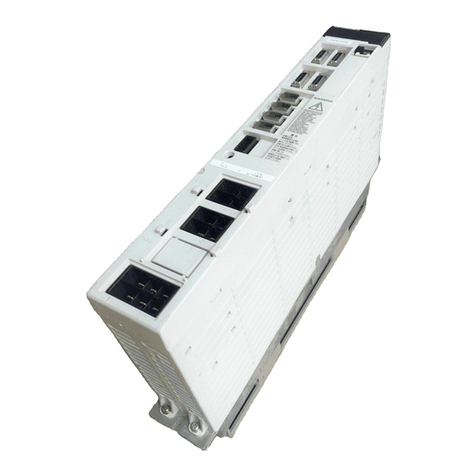
Mitsubishi Electric
Mitsubishi Electric MELDAS MDS-R Series Specifications and Instruction Manual
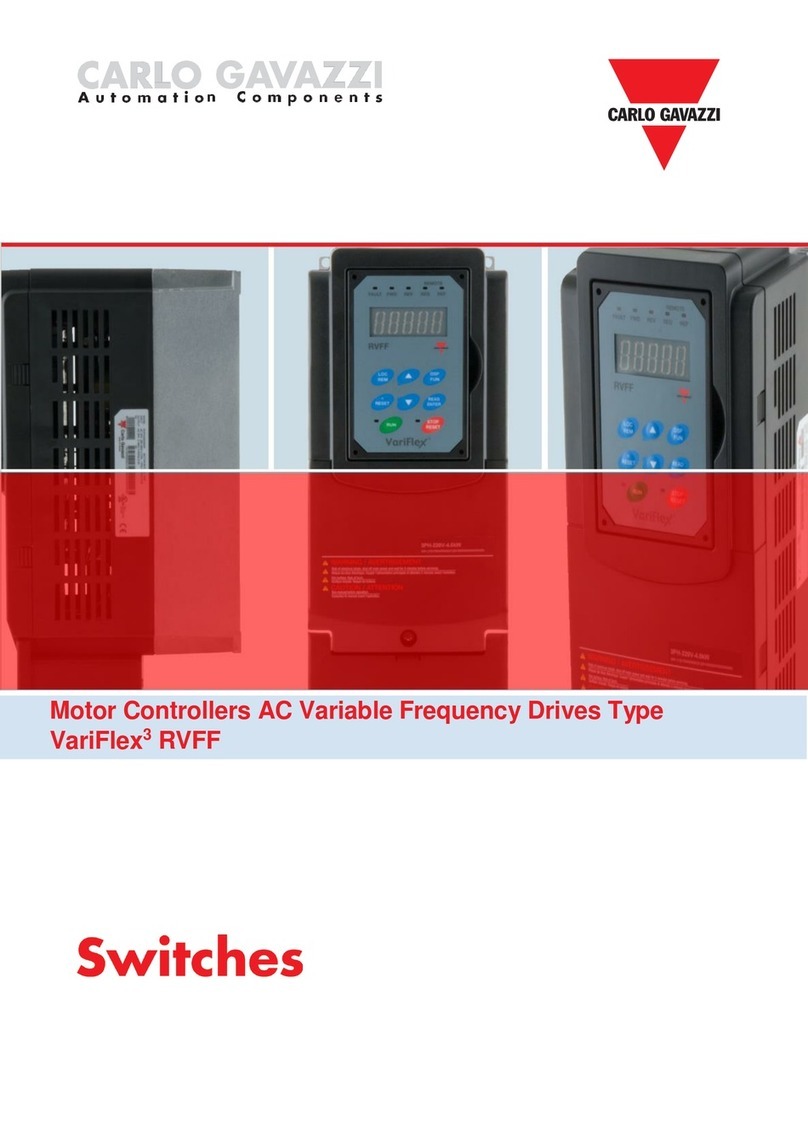
CARLO GAVAZZI
CARLO GAVAZZI VariFlex3 RVLF Series manual
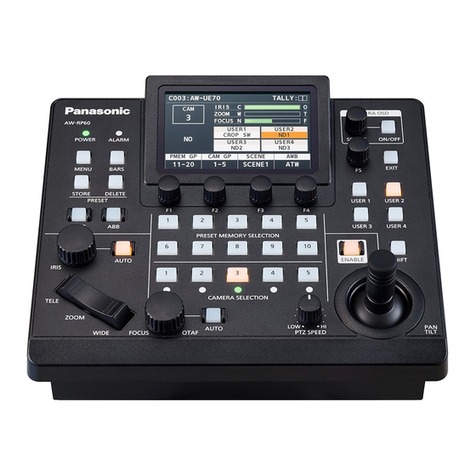
Panasonic
Panasonic AW-RP60G operating instructions
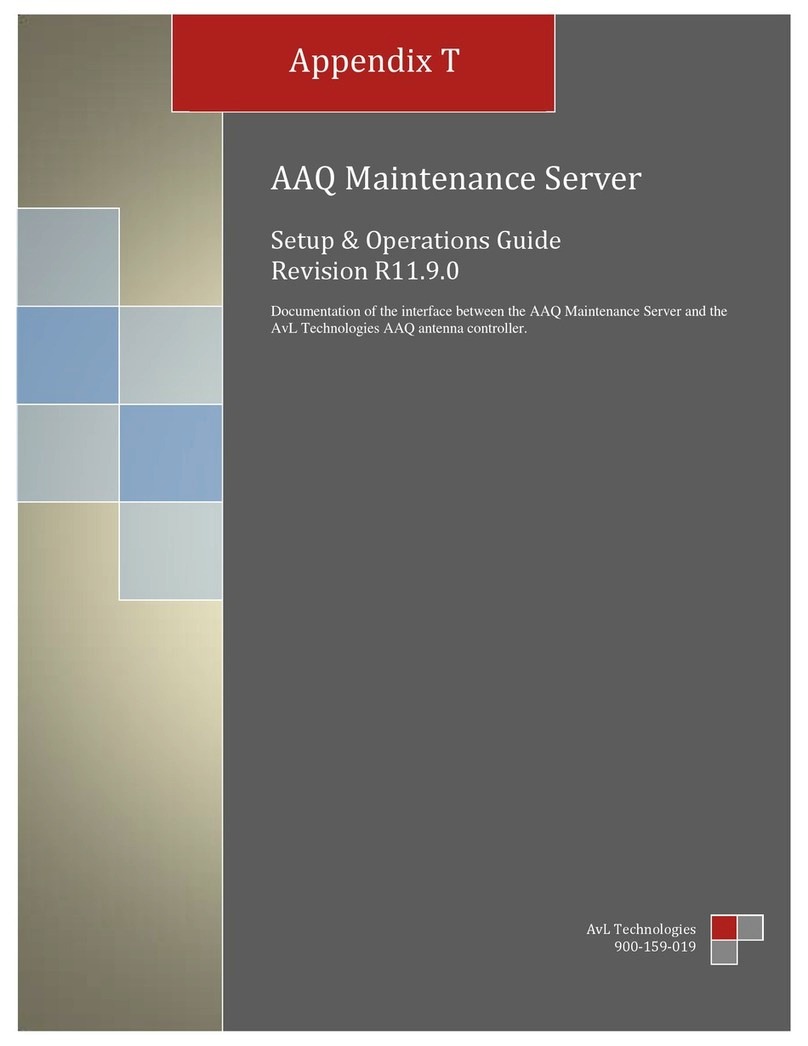
AvL Technologies
AvL Technologies AAQ Maintenance Server Setup & operation guide
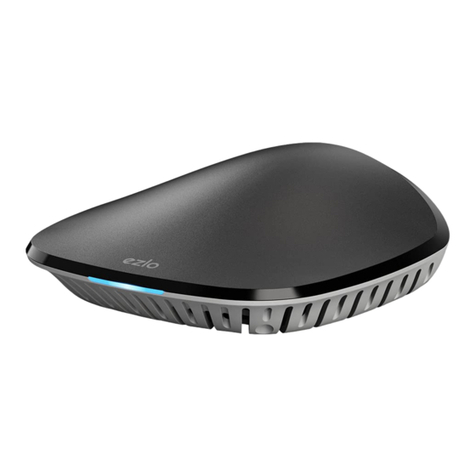
eZLO
eZLO Plus manual
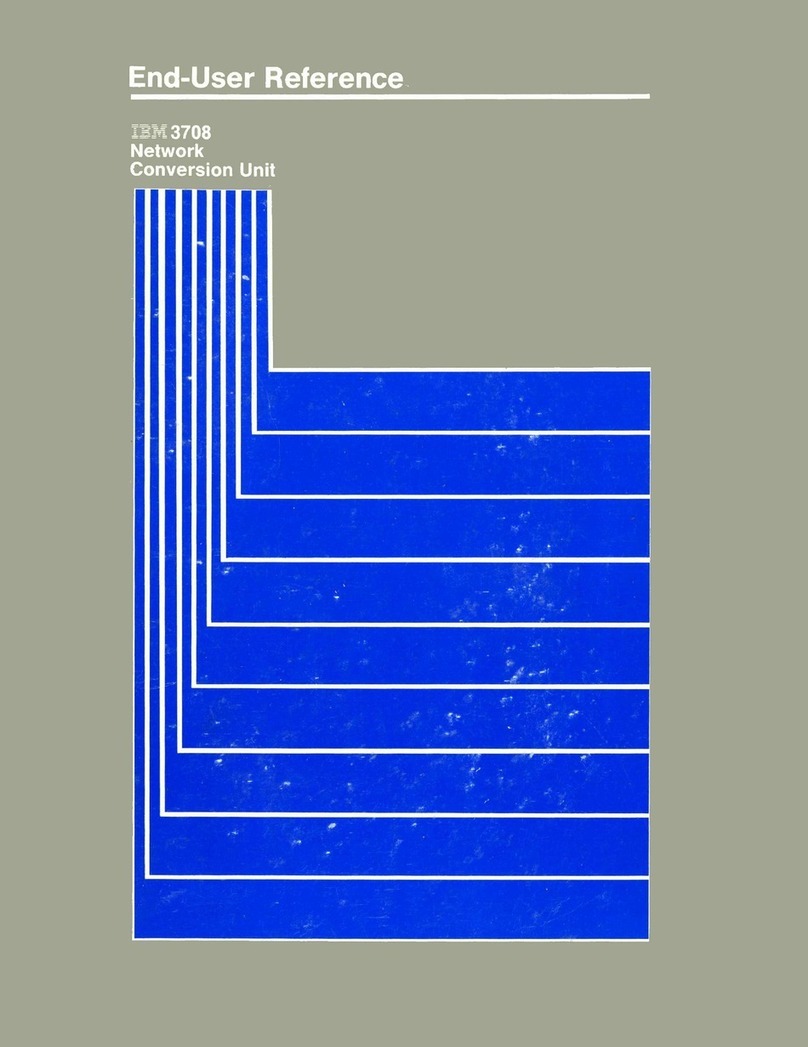
IBM
IBM 3708 End-User Reference
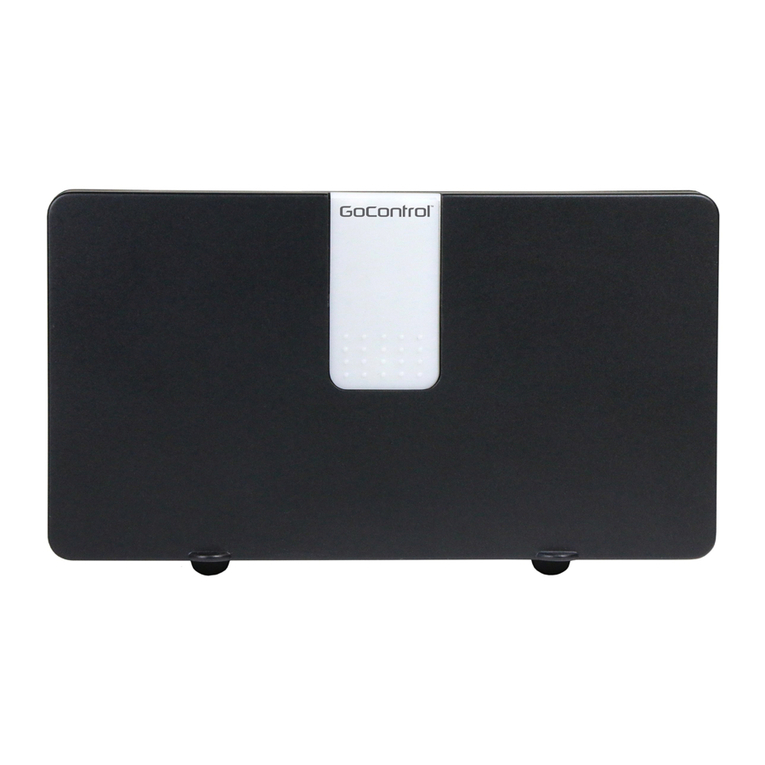
Nortek Security & Control
Nortek Security & Control GoControl WI15VZ-1 instructions
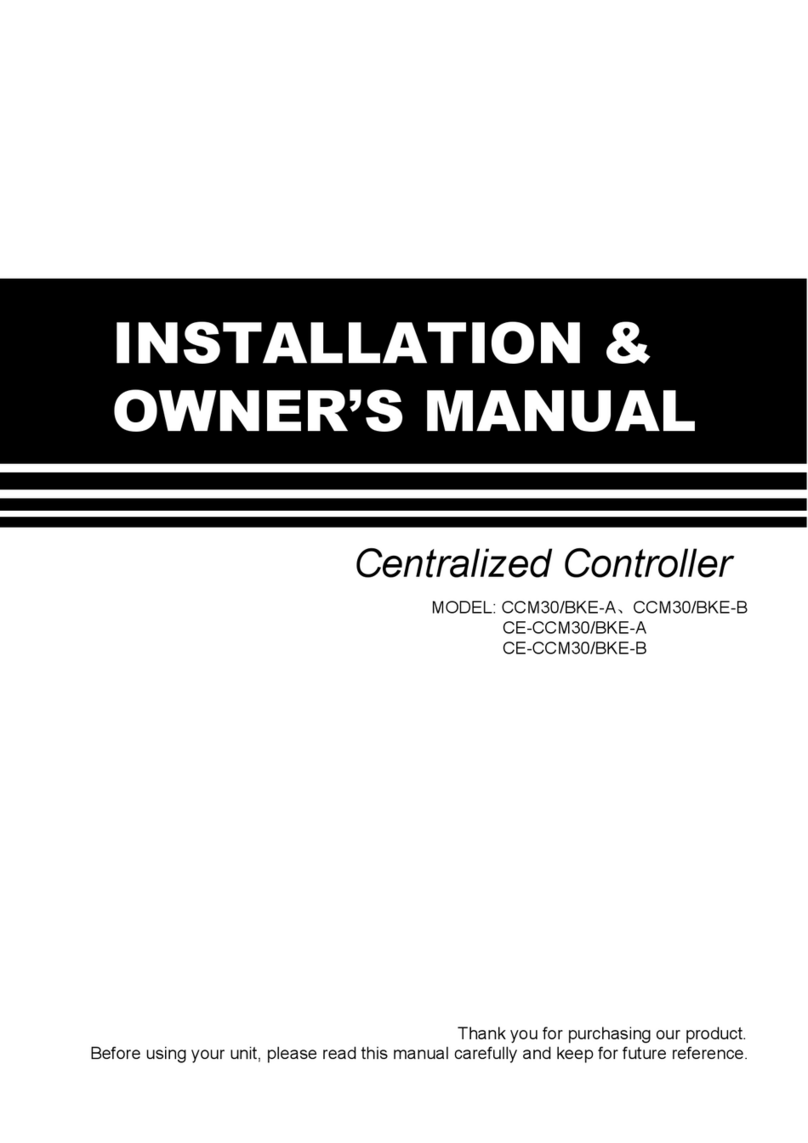
Airwell
Airwell CCM30/BKE-A Installation & owner's manual
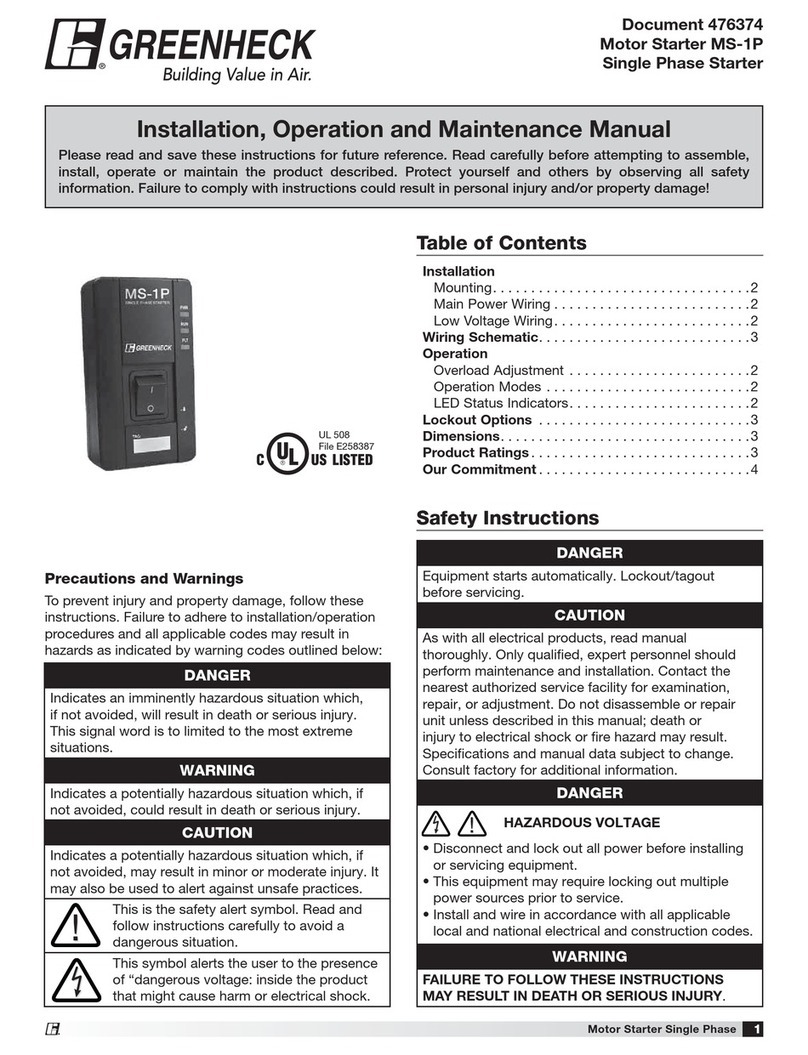
Greenheck
Greenheck MS-1P Installation, operation and maintenance manual
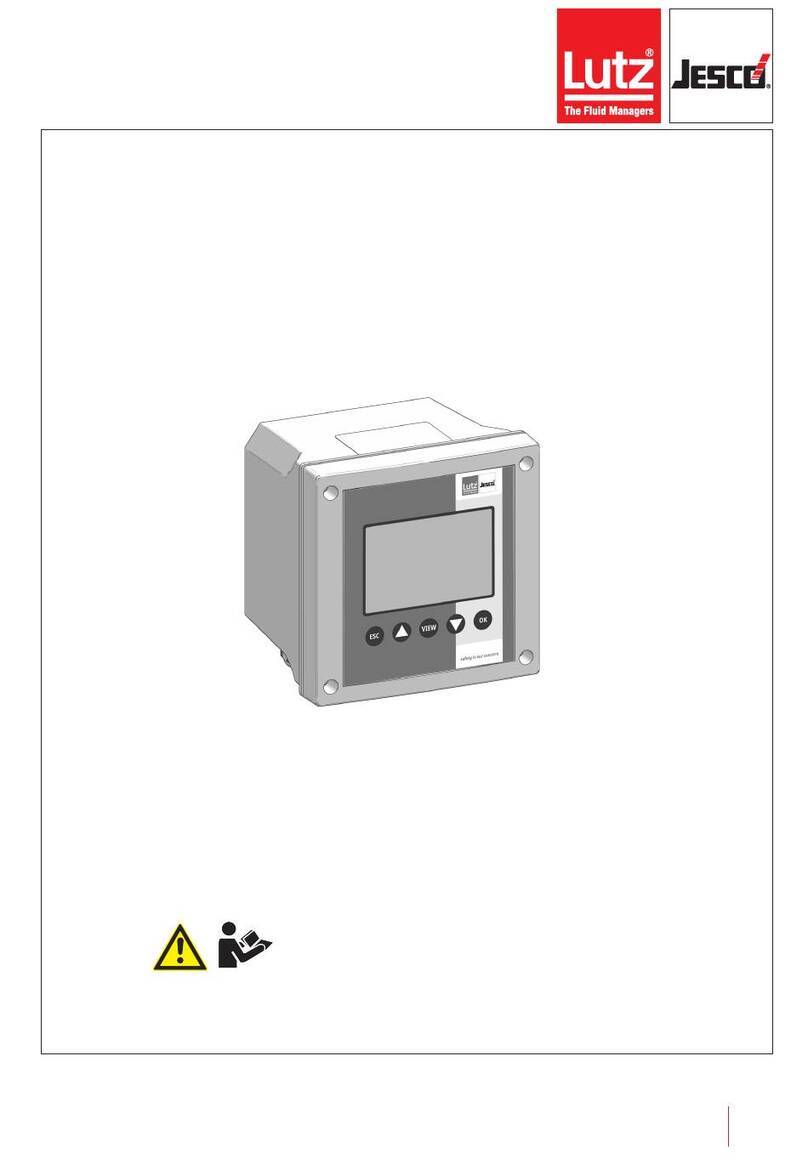
Lutz
Lutz Jesco TOPAX L operating instructions



